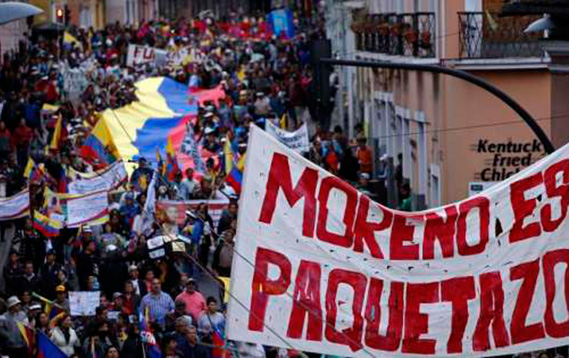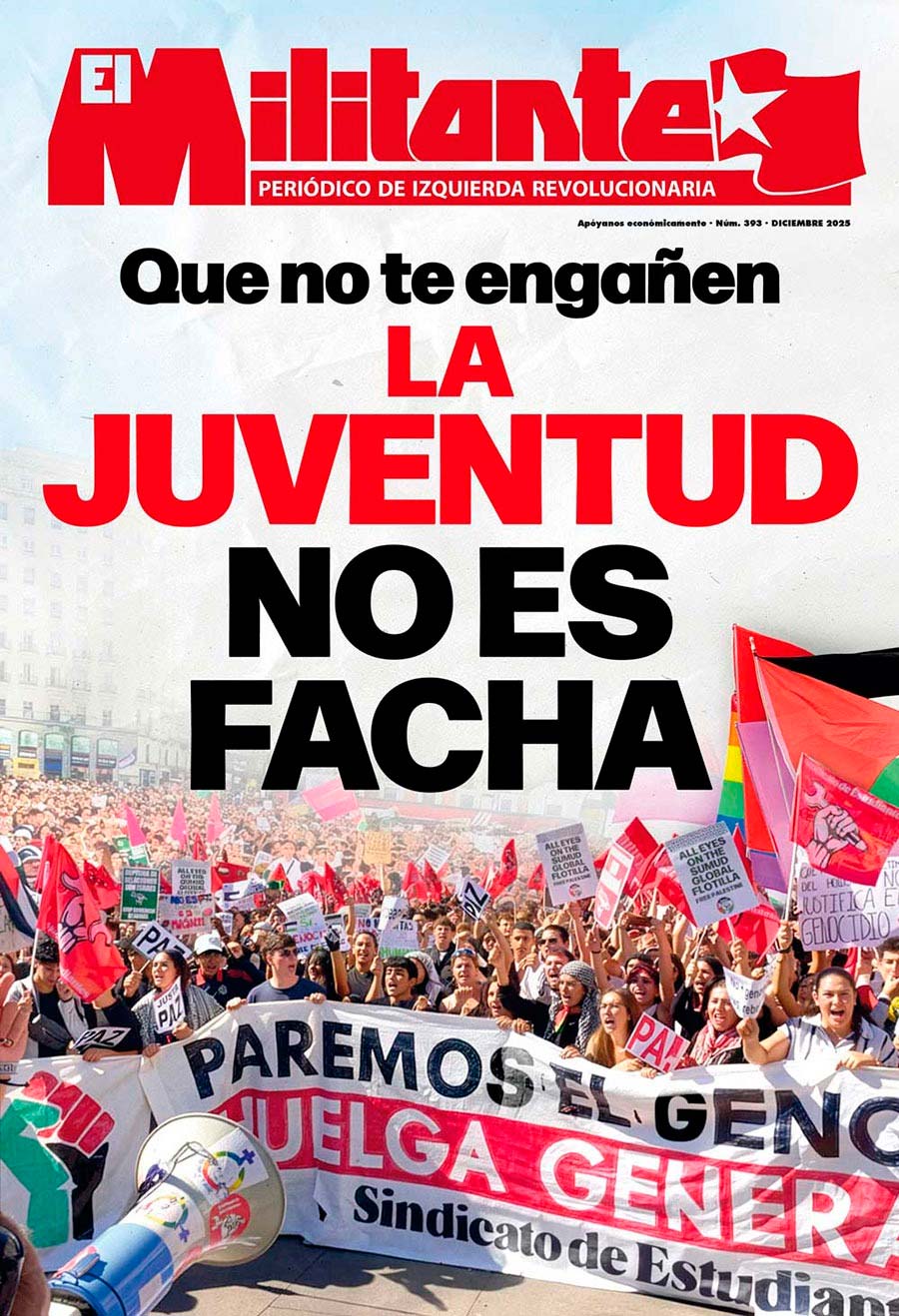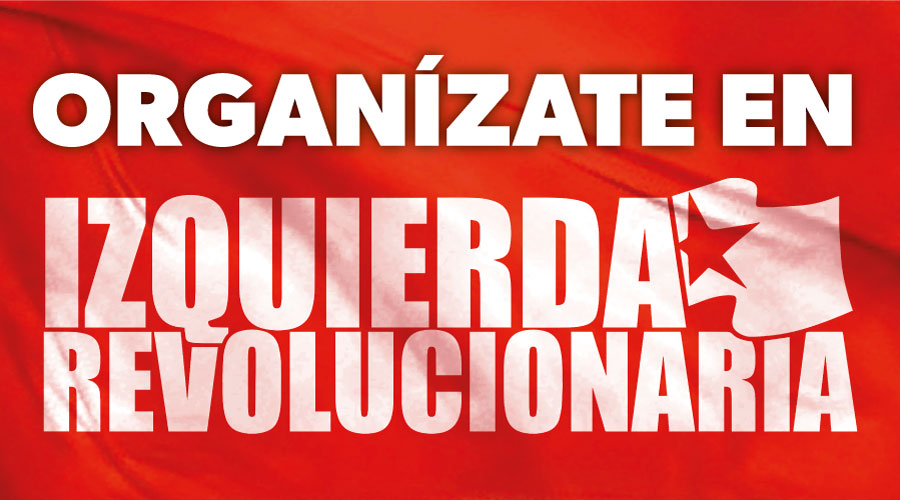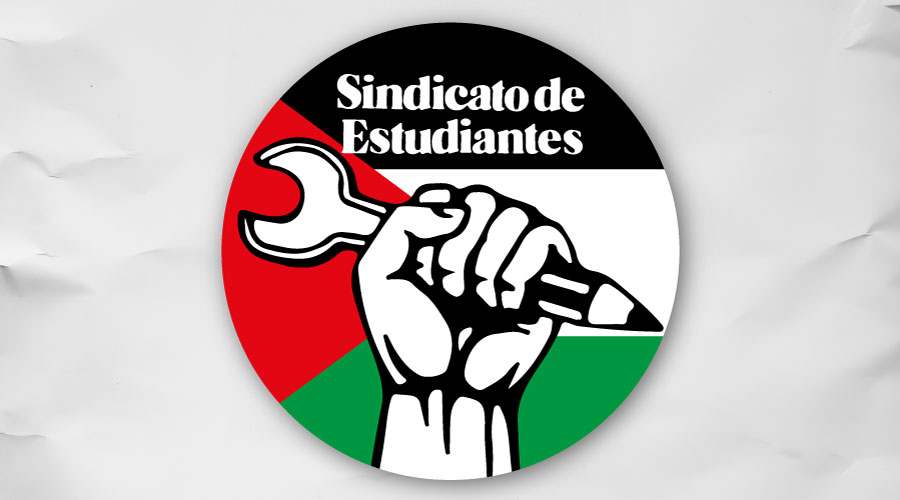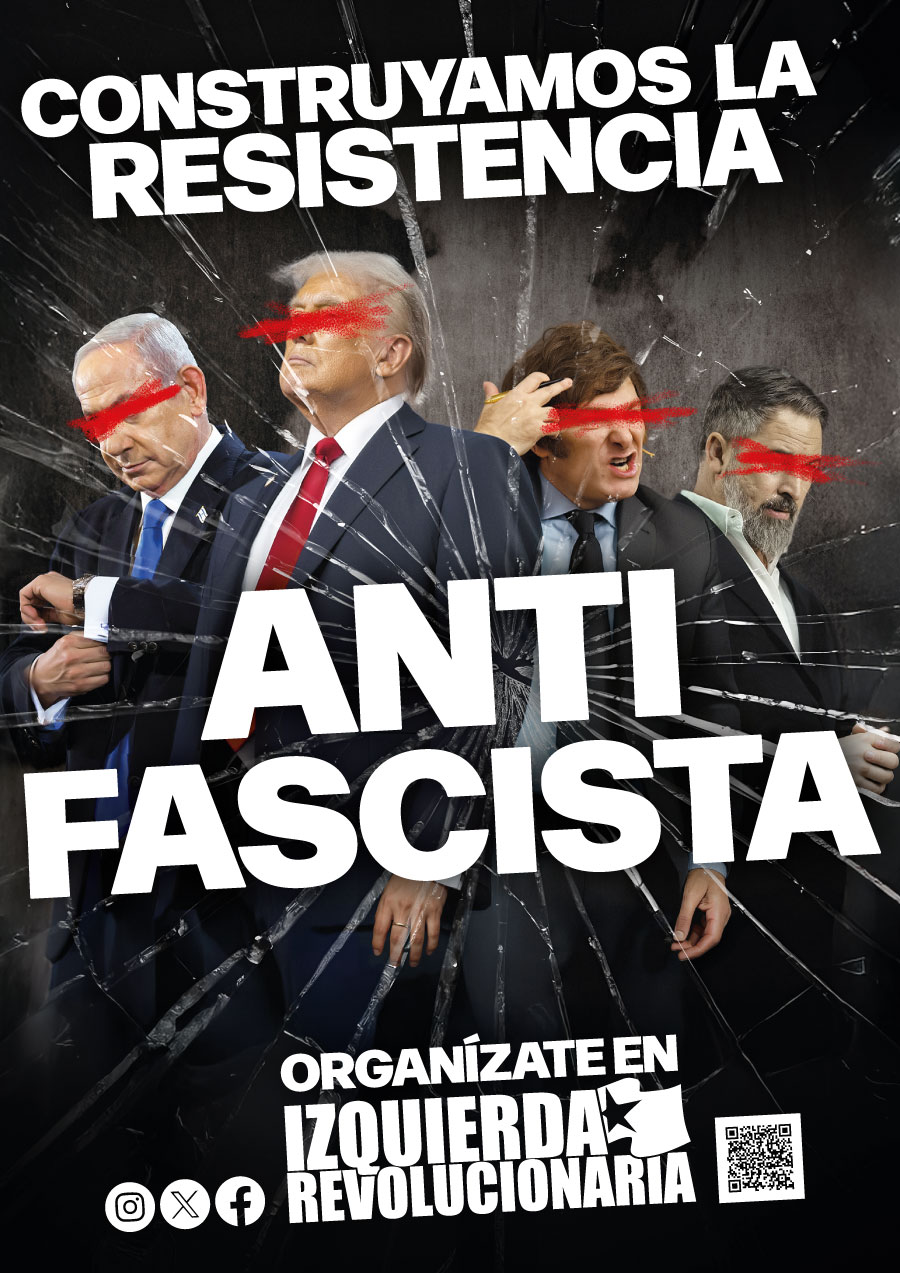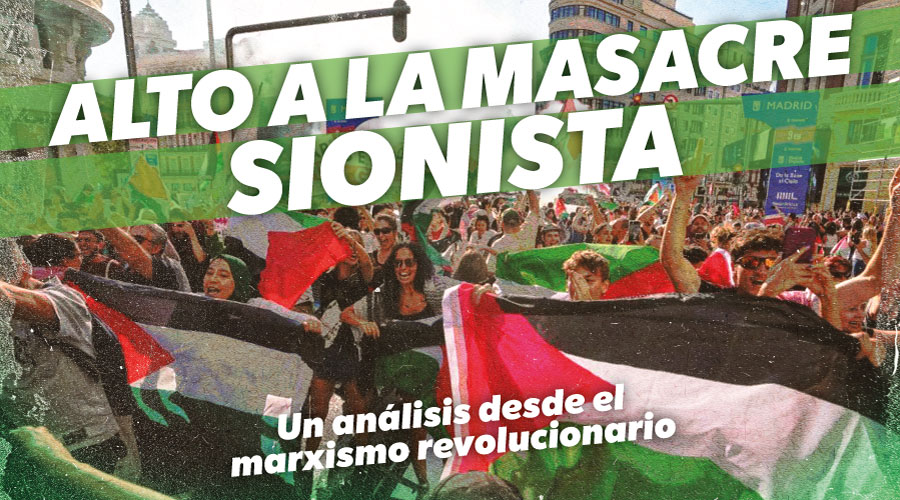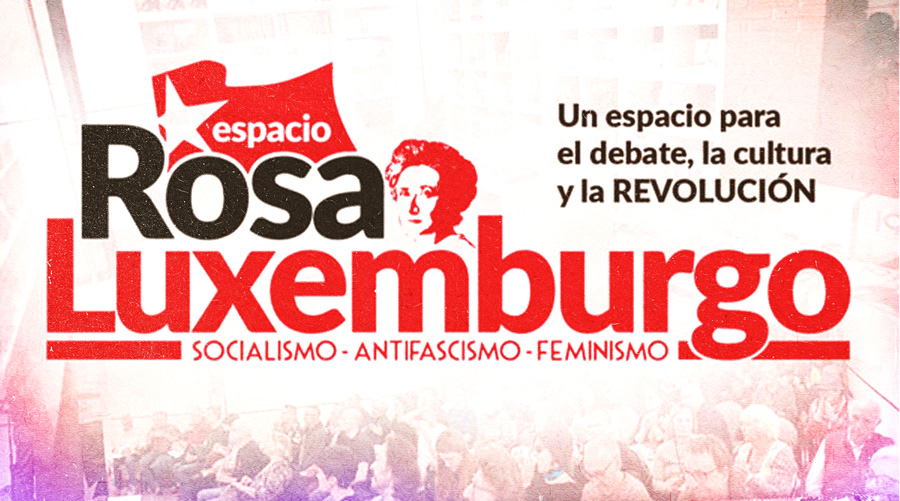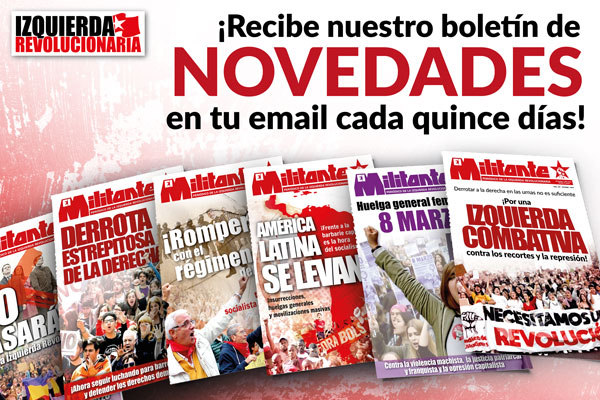Without a doubt, there has been a popular insurrection in Ecuador that has put Lenín Moreno's regime on the ropes. The battle against the neoliberal agenda was transformed into a true revolutionary uprising.
In March of this year, the president of Ecuador closed an agreement with the International Monetary Fund (IMF) to obtain a loan of up to 10,000 million dollars (almost 10% of the country's GDP!). The counterparts soon appeared: on October 1 Moreno presented the well-known “Paquetazo” (austerity package), a wild plan of social cuts and austerity measures, which included the elimination of the fuel price subsidy to triple them.
The response of the population was swift, and protests spread rapidly throughout the country. Lenín Moreno's counterattack, declaring the state of exception, lit the fuse of the insurrection by adding and uniting the labor movement, poor peasants and indigenous communities, and leading to a great general strike on October 9. The thrust of the masses was such that it forced Moreno to move the government headquarters from Quito to Guayaquil, while the capital was occupied for days by tens of thousands of peasants and workers.
A hard attack on the working class
The IMF's capitalist and neoliberal policies have only sown extreme poverty, precariousness, destruction of the economy, misery and despair among the population throughout Latin America. Among the measures imposed, the one that caused the most outrage was the withdrawal of the fuel subsidy. And is not for less. The rail and river transport network in Ecuador is extremely scarce, both due to the lack of investment and the rugged mountain range of the Andes and the density of the jungle. The slightest increase in the price of fuel means an increase in the prices of the essential products.
The labor reform also spurred the fury of the population: it suggested that temporary contracts (affecting 60% of the active population) could be renewed with a salary reduction of up to 20%. For their part, public officials would see their paid vacations reduced from 30 to 15 days, and they would have to contribute with the salary of a working day in the form of an extraordinary tax. All this in a country where the official minimum wage barely reaches $400 and 35% of the population makes less than $50 per month. If carried out, these measures would have been an unprecedented blow to the living conditions of the majority of the population, and their social consequences would be catastrophic.
The masses go into action
The loss of control by the state was extraordinarily fast. What began as a strike of public transport workers immediately became a generalized uprising across the country, which was spurred by the announcement of the declaration of the state of emergency and the deployment of the army in the main cities.
The harshness of repression promoted by the Government was exposed on social media. Young protesters were seen being chased by police on motorbikes to isolate them one by one and beat and detain them indiscriminately. People wounded by shots of rubber bullets in the head and vital areas. Even two young men being thrown off a bridge by unidentified uniformed elements. The description of these attempts to crush the movement using repressive forces could fill entire pages. The balance after almost two weeks of protests was 7 dead, about 600 injured and more than a thousand arrested.
As has happened on many occasions throughout history, the whip of repression did nothing but ignite the revolution. The general strike called by the Unitary Front of Workers (FUT), the largest trade union federation, and the Confederation of Indigenous Nationalities of Ecuador (CONAIE) paralyzed the country, blocking not only roads, but entire provinces, and taking the city of Quito, the capital.
Strength of the movement and weakness of the bourgeoisie: a true pre-revolutionary situation
Although Quito has been the scene of mass mobilizations and the occupation of the National Assembly by the protesters for a few hours, in the provinces of Pastaza, Napo, Morona Santiago and Azuay the occupation of the governmental headquarters was permanent, and there were initiatives of Autonomous Popular Assemblies where, according to different sources, thousands of people participated. In many other provinces, access was controlled by councils of poor and indigenous farmers. The radicalization of the movement was such that, in response to the state of exception, CONAIE proclaimed its own state of exception in these regions, stopping the progress of repressive forces and even stopping and disarming dozens of troops.
On the other hand, the Government remained entrenched in Guayaquil. The choice of this traditionally conservative city was not accidental: it is the second most important city and the main port of the country, has a large layer of white petty-bourgeoisie linked to commerce, beneficiary of the Paquetazo and that showed its availability to defend the Government mobilizing in the "defense of peace and freedom". However, these manifestations were an absolute failure, bringing together a few hundred. This reflects the enormous weakness of the Lenín Moreno Executive and the Ecuadorian ruling class. Moreover, Moreno's international isolation is another indication of this. Except for the Venezuelan putschist Juan Guaidó, and for Pedro Sánchez, there have been very few voices in defense of the Ecuadorian Government, which came to be on the edge of the precipice. According to the newspaper of the Ecuadorian bourgeoisie El Universo, numerous deputies of the National Assembly valued forcing Moreno's departure.
On the other hand, former President Rafael Correa showed timid support for the uprising, which did not find an echo in the movement, to such a point that broad sectors of the peasant and indigenous movement directly broke up from Correa. Although many city-run supporters actively participated in the mobilizations in the cities and the countryside, the apparatus grouped around their party, Social Commitment Force, showed an enormous fear of not being able to control the mobilization and that it turned against them. The former president could only group a few young university students around the online newspaper La Kolmena, which did not play any real role in the events outside of the social networks.
With a growing loss of support among the masses, Correa called the electoral advance while hinting at his intention to present himself. Far from generating sympathy, the masses reacted to this announcement with skepticism. Amid the organic crisis of world capitalism, the commercial war, and the fall in the price of oil, without questioning the fundamentals of the capitalist system there would be no difference between the management of Lenín Moreno and a new Correa Government.
Along the same lines, it is important to point out that although Moreno and his acolytes made tremendous efforts to point out the Government of Venezuela as an instigator and director of the protests, Nicolás Maduro and his cabinet, showed a clearly symbolic support for the mobilizations to keep the backs of face to the honest and fighter Chavista base. They had no interest in keeping the situation in Ecuador out of control and going further. A revolutionary process in the continent can be a catalyst to revive the organization and struggle of the Venezuelan working class, which does not forget how the social and economic conquests of the Bolivarian Revolution have been undermined by the bureaucratic apparatus of the PSUV. The current Maduro government has a strategy focused on defending the privileges and businesses of the bureaucrats, careerists and military officers it represents, guaranteeing the agreements they have reached with Chinese imperialism, and not extending a social revolution that can affect directly.
An incomplete victory: the seizure of power was possible!
Faced with this unsustainable situation, and after several days pleading for dialogue with the leaders of the mobilizations, President Lenín Moreno announced, after a brief meeting with members of CONAIE, the repeal of decree 883, the famous Paquetazo, although there was no resignation or dismissal on his government team. In turn, this measure was accompanied by a series of promises of social investment. Immediately, the directions of CONAIE and FUT called for demobilization and order returned to Quito as quickly as it disappeared, amid some perplexity on the part of the masses that rose and resisted heroically.
Without a doubt, the backing down of the Government and the IMF is a spectacular victory, which has been the sole and exclusive result of the combative struggle of the Ecuadorian people, which demonstrates the only way to stop the attacks on the working class. The bourgeois panic of losing everything has made them give up a portion. While they may take other forms, the measures and cuts to satisfy the IMF will return sooner rather than later, in addition to new moves to prevent a new uprising. The first occurred on October 23, with the announcement by the Ministry of Justice that it would prosecute Jaime Vargas, leader of the CONAIE, for the protests.
The weakness of the state and the strength of the masses in action raised the question of power. Effectively, the assemblies of peasants, indigenous people and workers were demonstrating, throughout the whole country, that a socialist revolution is not only feasible but also a feasible possibility from today.
The indigenous guard imposed the revolutionary order in the city holding back all kinds of looting and provocations. Popular assemblies arrested and tried armed agents involved in the wild repression of the population while managing the distribution of food and medicines in the camps throughout the city of Quito. In practice, although briefly and in a confused manner, the population controlled a large part of the country, surpassing the capitalist state.
The leadership of the Unitary Front of Workers and CONAIE limited themselves to demanding the withdrawal of Lenin Moreno's measures and the resignation of some senior officials involved in the repression. Not just a few leaders appealed for a UN delegation to intervene to curb repression and to "respect” human rights.
The most repeated slogan in the days of the occupation of Quito was none other than "Lenin out!" The possibility of deposing the Government as a whole was an incontestable reality. But not only that. Just as embryos of dual-power organisms spontaneously emerged in the provinces with the largest indigenous and peasant population, as we have explained, the feasibility of consolidating and extending them to the labor movement and coordinating them throughout the country existed. This would have been the only way to ensure, not only the stop the Paquetazo but also to apply a socialist programme to break capitalism and imperialist dependence, and unify the masses: free and quality public education; decent, stable and safe work for everyone, with decent wages; the repeal of all labor counter-reforms; nationalization of banks, monopolies and large estates under workers and peasants control; full economic, social and political rights to indigenous communities; suspension of agreements with the IMF and cancellation of the debt contracted by the State with the imperialist powers.
Without a doubt, the 12 days of protests will be etched in the collective consciousness of the Ecuadorian masses and the entire region. Millions of people have watched with total sympathy and enthusiasm the uprising of the struggling people of Ecuador, which has coincided with the mass social explosions in Iraq, Lebanon, Hong Kong, Argentina, Uruguay, Catalonia, etc. As the system falters, it is urgent to build a consistent revolutionary party capable of bringing the battle to the end.
For the Federation of Socialist Republics of Latin America!
Join the International Revolutionary Left!






